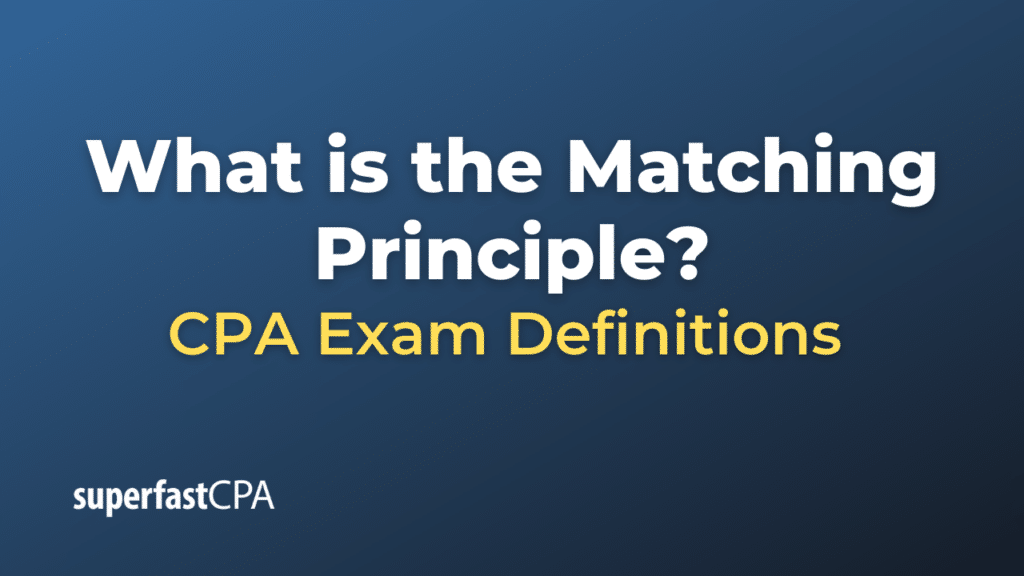Matching Principle
The matching principle is an accounting concept that dictates how businesses record their income and expenses in order to ensure accuracy and consistency. It is a fundamental part of accrual accounting and is used to ensure that revenues and associated expenses are recorded in the same accounting period.
Specifically, the matching principle requires that expenses be matched to the revenues they helped to generate. In other words, if a cost contributes to the creation of revenue, it should be recorded as an expense in the same period that the revenue is recognized.
For example, if a company sells goods on credit, it would recognize the revenue from the sale when it delivers the goods to the customer, not when it eventually collects the payment. Similarly, the cost of producing the goods (materials, labor, overheads, etc.) would also be recorded at the time the goods are sold, regardless of when the actual expenses were paid out.
The purpose of the matching principle is to prevent misrepresentation of financial information and ensure a clear and accurate picture of a company’s profitability. It helps avoid situations where revenues and expenses are recorded in different periods, which could distort the financial results of a company. This, in turn, can aid in better decision-making for management, investors, and creditors.
Example of the Matching Principle
Let’s say “ABC Clothing,” a retail business, buys $5,000 worth of merchandise in December 2023. The company sells all of this merchandise in January 2024 for $10,000.
According to the matching principle:
- ABC Clothing wouldn’t record any expenses in December 2023, even though that’s when it paid for the merchandise. There’s no corresponding revenue in December, so the expense doesn’t yet meet the criteria of the matching principle.
- In January 2024, ABC Clothing would record $10,000 in sales revenue. Even if some or all of this revenue was earned on credit (i.e., the customers haven’t paid yet), the revenue is still recorded in January, because that’s when the company made the sales.
- Also in January 2024, ABC Clothing would record $5,000 in cost of goods sold, representing the cost of the merchandise. This is the case even though the company paid for the merchandise in December. The expense is recorded in January, because that’s when the company sold the merchandise and generated the corresponding revenue.
So, by applying the matching principle, ABC Clothing has accurately matched the revenue from selling the merchandise ($10,000) with the cost of buying that merchandise ($5,000) in the same period (January 2024), providing a clear picture of the profitability of the sales made in that period.












